Twenty-seven years ago I responded to a classified ad for instructing art for the Carmel (CA) Adult School. I was doing freelance graphic design, illustration, sign work and any other art-related work to get by. The only experience I had in teaching was my former career as a golf professional. Low and behold I got hired. I felt I had to know what I was talking about so I proceeded to educate myself by reading every art instruction book I could get my hands on. I taught adult art classes for various institutions for the next 12 years until I could make ends meet by selling my paintings and teaching my own private and group lessons. My method for instructing was to do a demo and articulate verbally my approach to specific fundamentals of painting for every class. My skills vastly improved and my students didn’t seem to mind. In fact they said they learned a lot from the demos.
In return, I learned about my students and teaching. Most people don’t realize what it takes to make a painting or drawing look effortless. Like learning to play a musical instrument or hitting a golf ball it requires learning the fundamentals and lots of practice.
Drawing & Composition
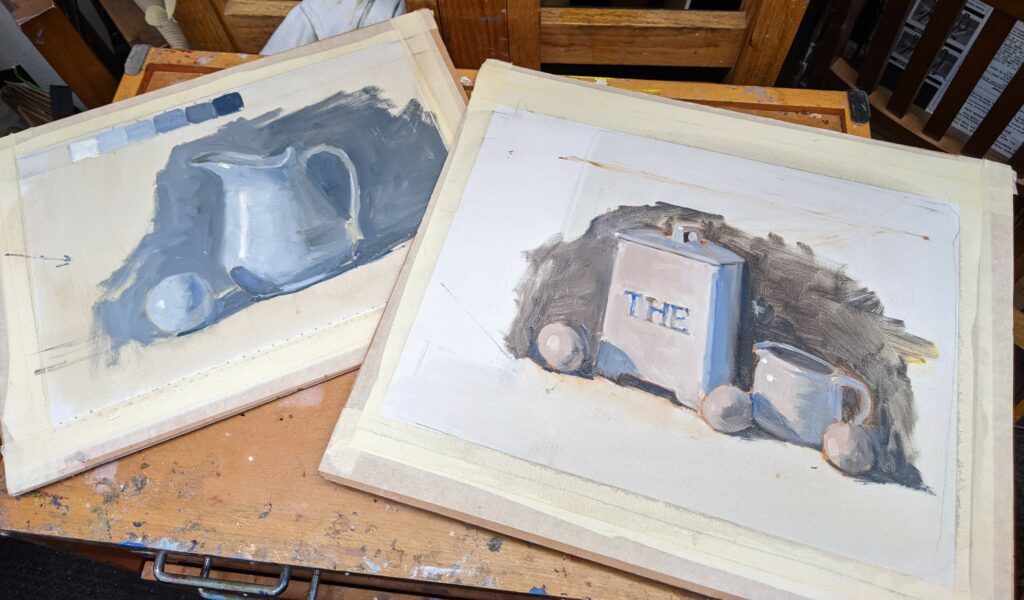
“Drawing is the probity of art. To draw does not mean simply to reproduce contours; drawing does not consist merely of line: drawing is also expression, the inner form, the plane, the modeling. See what remains after that.” – Jean-Auguste-Dominique Ingres
Without some knowledge of proportion, perspective and other drawing fundamentals teaching a student to paint can be challenging. Beginning painters just want to jump right into piles of color. I usually recommend starting off with still life subject matter with simple shapes and a limited palette. Sketching the human figure is the best way to improve drawing skills. I know a student is serious when I see the person at figure drawing sessions.
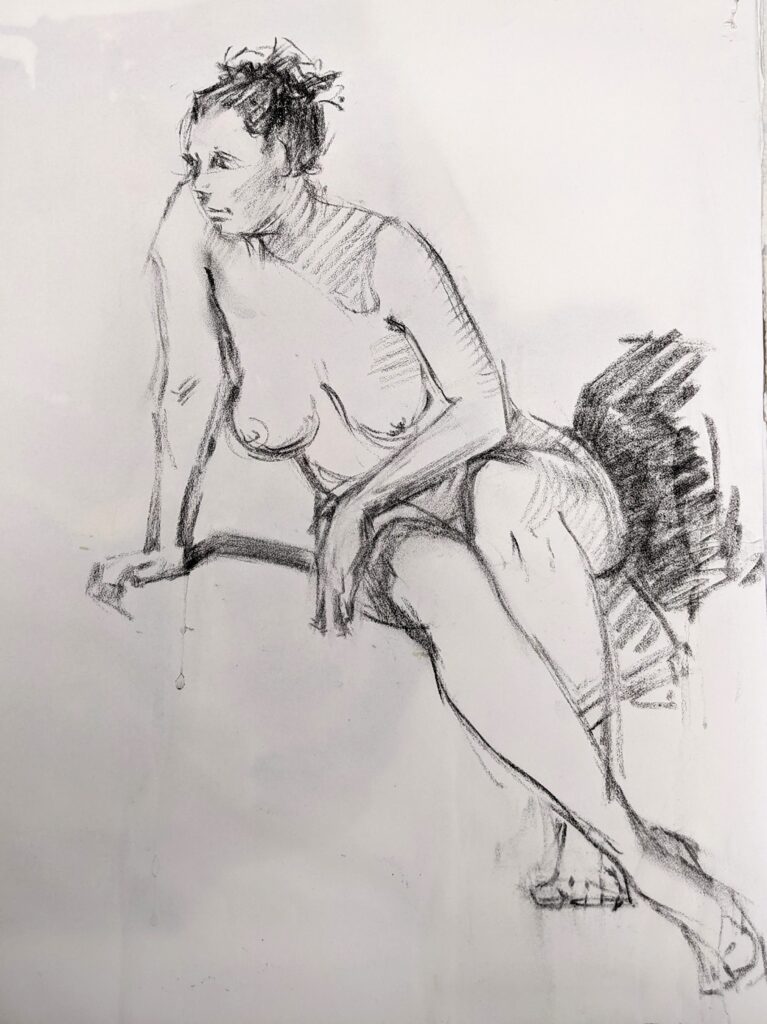
Recommended reading for students, Drawing on the Right Side of the Brain® 1979 (revised and reprinted in 1989, 1999, and 2012), Penguin Putnam By Betty Edwards
As far as composition goes, I stress to students what not to do instead of hard and fast rules. It is not uncommon to see the masters occasionally break so called rules of composition.
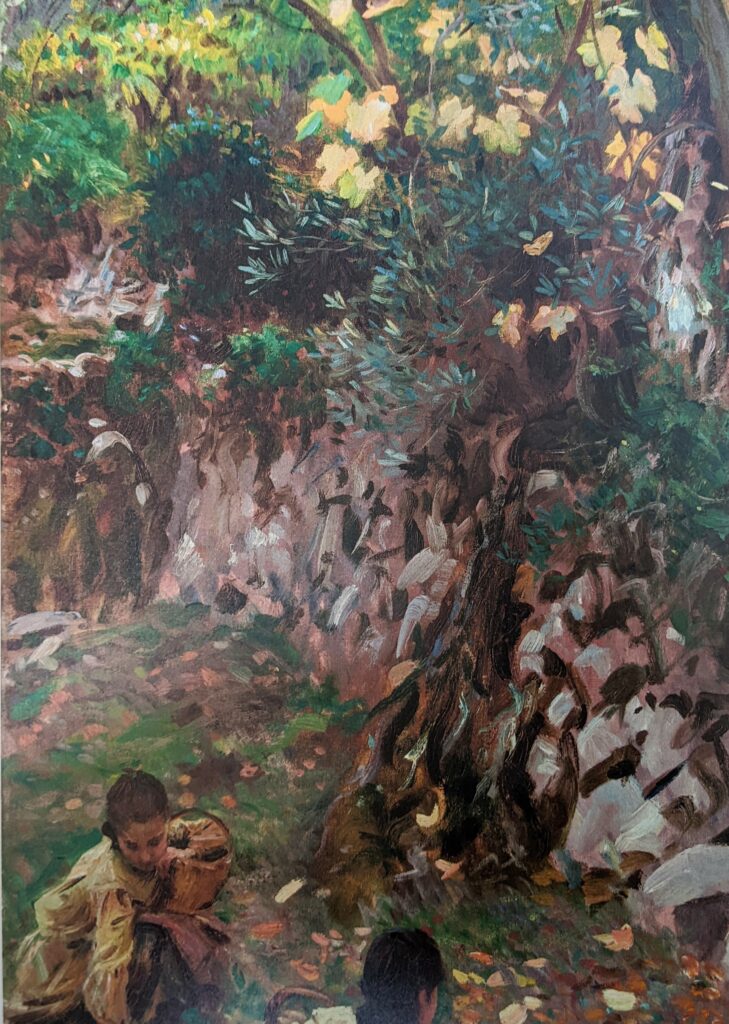
The Composition of Outdoor Painting, by Edgar Payne – The text is a bit wordy, but the thumbnail illustrations are a good starting point.
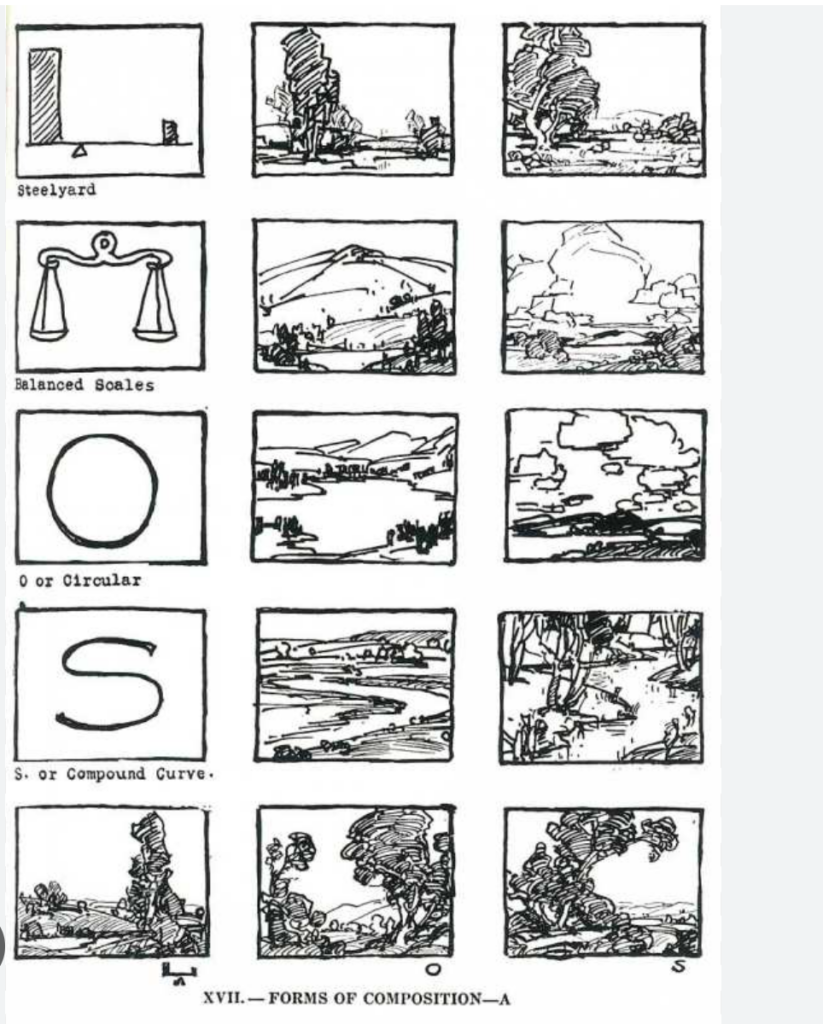
“Composition and the ability to structure your work on a flat surface takes time and practice to learn and understand.” From a book review by Dennis Babbit
Values
I recently picked up paintings from a show I had at a local tasting room. The next show, a local plein air art club, was on display. As I walked around and looked at the paintings, I was struck by the fact that overall, the most room for improvement would be in the values. Values do the work, color seems to get more attention. Novice students seem to obsess over color.
“Let me put in the darks and the janitor can put the lights in” Charles Movalli OPAM
A common fault is breaking up the dark shapes with too many values. The lightest values in the dark shapes should not be lighter than the darkest values in the light shapes.
Recommended reading for landscape painting and how planes (surfaces) reflect light: Carlson’s Guide to Landscape Painting by John F. Carlson.
Color
In college we were required to use gouache or casein mediums in class. When I was freelancing I used water based mediums for illustration and design jobs. I started off with watercolor for fine art paintings. When I got interested in plein air painting I found watercolor to be temperamental to weather conditions, so I experimented with oils. I found painting in oils challenging, especially with the color aspect. So many more options and mixing of tones! Doing color charts was not giving me the understanding I needed until I grasped the concept of color temperature. I had to literally see it to really wrap my head around it. Once I got it, it became my basis for explaining color theory in my teaching. Warm/cool color relationships render how light plays on objects, rendering volume and atmosphere (perspective).
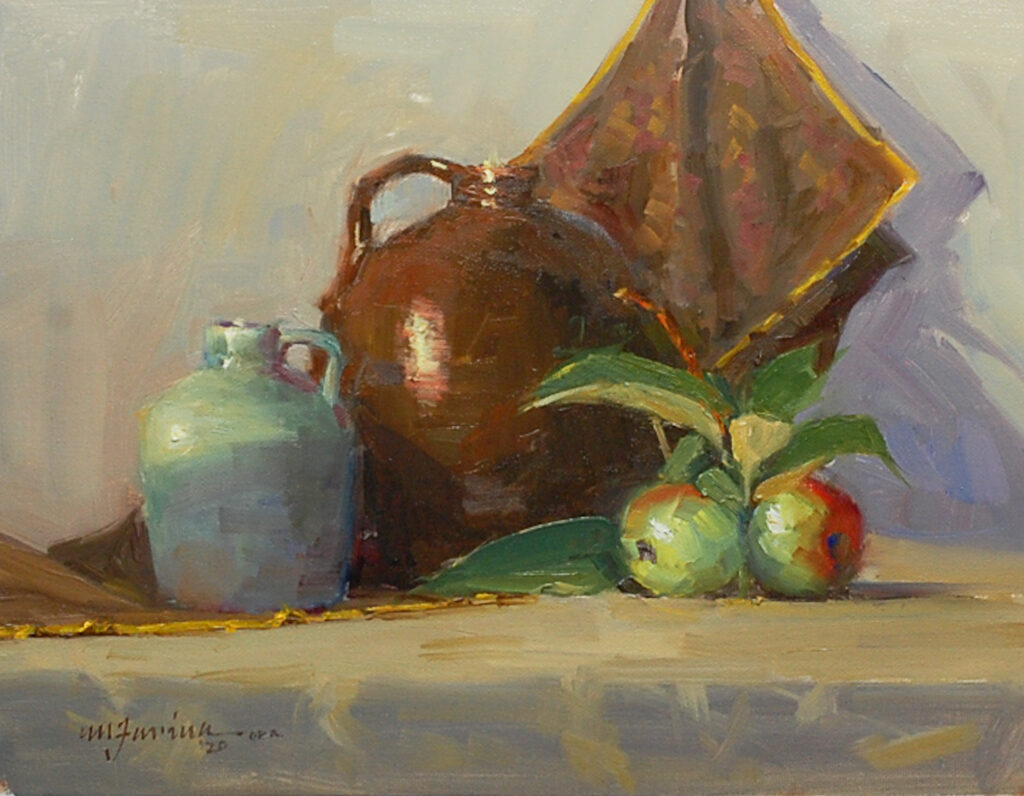
9” x 12″ collection of artist
Edges – where one surface meets another in a painting
“Each time we touch a brush to canvas we create edges. It is the character of those edges – the gradual or abrupt way they merge with other strokes- that makes all the difference.” Richard Schmid, Alla Prima II
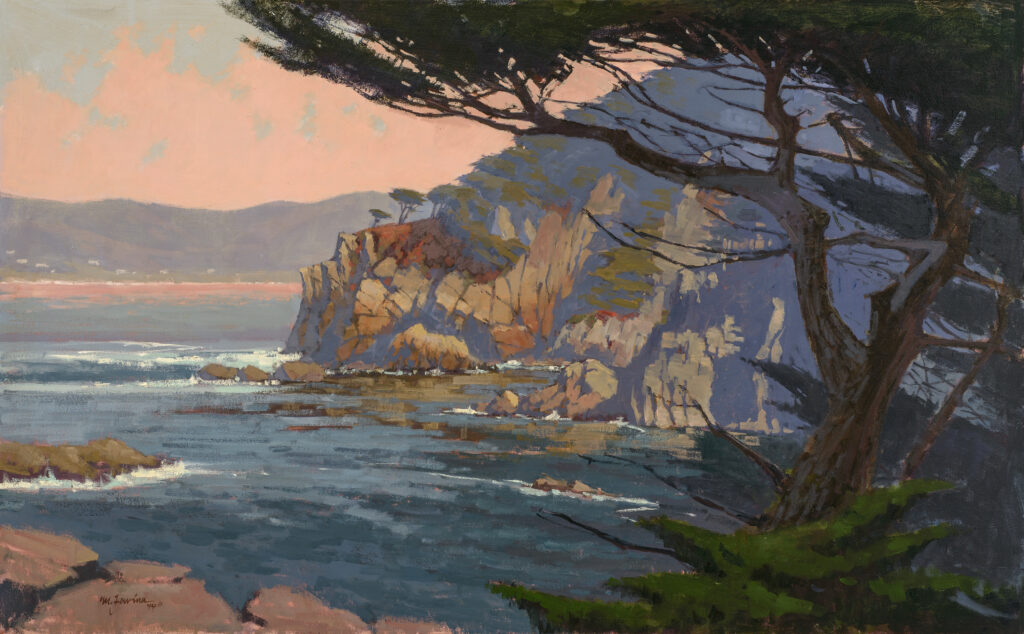
30” x 48” private collection
This aspect of painting is probably the most sophisticated quality in painting and the one of the most essential to the emotion of any painting. The manipulation of the edges dictates the eye flow of viewer, expression of the artist and individual style.
Alla Prima by Richard Schmid is one of the most comprehensive books on painting fundamentals I’ve read. I recommend it to all students of representational painting.
The Most Beneficial Thing I’ve Learned From Teaching
I don’t teach a style for representational painting, I try to stick to above fundamentals and believe a style will emerge with each individual student (if they stick to it). When I am at the easel I’m concentrating on the above fundaments, not the style. This is the most important thing I’ve learned from teaching.
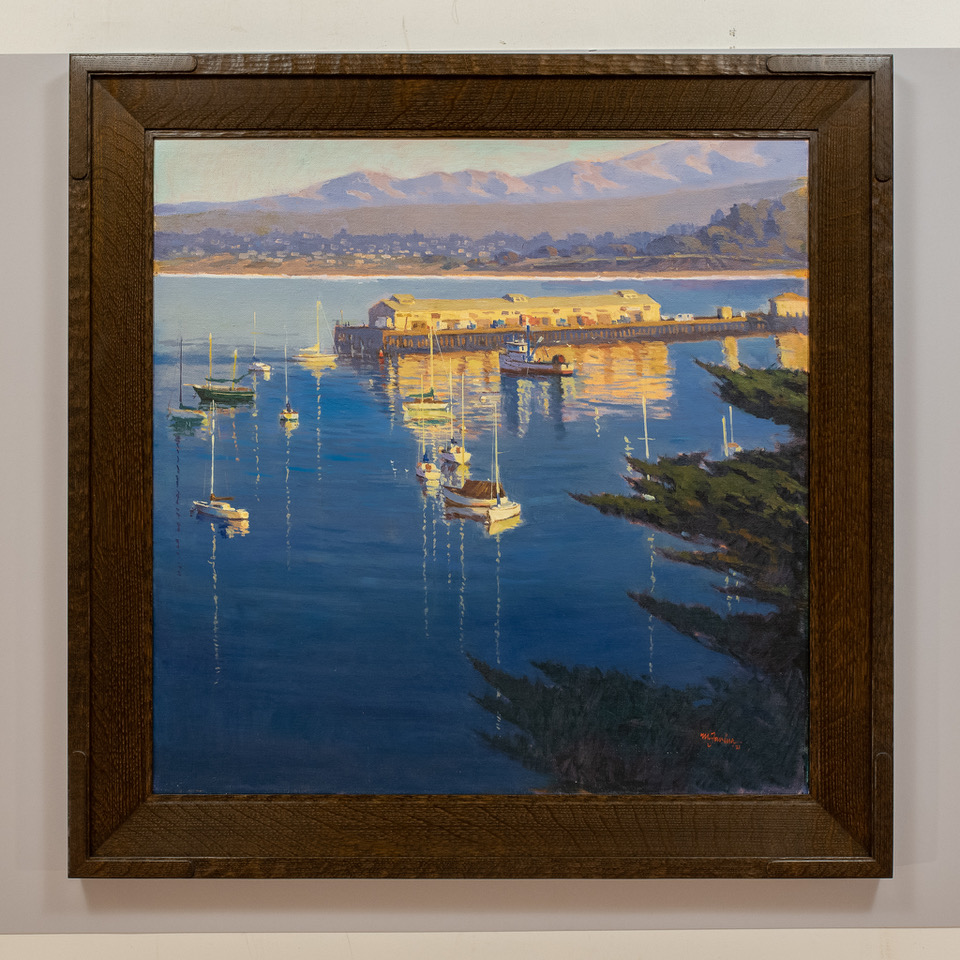
collection of artist
Rick J. Delanty says
I so very much agree with your proposition, Mark, that good teaching is all about the fundamentals, and that Style will emerge organically with focused practice and lots of time invested in the practice of painting. Design fundamentals rule.
“I was surprised that each expert cared for different images, and had varied suggestions for how to continue my work. If each expert had been my teacher, I would have pursued four different directions, and lost my way.” –Jane Fulton Alt
Thank you for this, Mark–my best to you in both your teaching and painting.
Mark j Farina says
thank you
Nikki Davidson says
Loved it! Mark’s story mirrors mine so closely that I wondered if I’d written it in my sleep. Teaching in Adult Ed., discovering Drawing From The Right Side of The Brain to teaching that Value is the most important element of a painting or drawing; it all hit home for me.
Love his work and will get the books recommended. Thanks so much.
Laura Crosby says
Excellent summary of the fundamentals of what a representational painter needs to grasp…it can take a lifetime of study, but therein lies the joy. I also appreciated the mention of importance of edges and color temperature. Thanks for an uplifting and informative article…now I think I’ll go and paint!
Schlesier Grace says
Mark, I would have loved your teaching. All your recommendations having read them all along the way, are in my estimation the best. What a great way for the beginner to learn the basics and all in one place. Great article and a great refresher for any artist at any time.
Thanks
April Silverman says
I started teaching adults and one 9-year-0ld genius boy about two years ago! It is so fulfilling and exciting to have students not only enjoy the classes, but also be proud and surprised at what they produce in each class! I also started painting in plein air and love your advice about the importance of edges and breaking up dark areas with values no lighter than the shadows in light areas. Makes sense! I think mist if the time I do that, but now I will be conscious of it! Thanks too fir the book recommendations!!
April Silverman
artataorils@gmail.com
Val Parnell says
I enjoyed it. I have quite a few art books and have been reading a lot over the last 3 years. It really helps to just get the fundamentals. Love now he started teaching. You have to have tenacity for any work.
Thank you
lynette redner says
Thanks Mark! I am on my second week of teaching art classes with the 10-13 yr olds,( second year of it) yes not the same as teaching adults, although I do that, too. I am just in the beginning of this teaching thing. There’s always that see of doubt, am I ready to do this. So far its been challenging and rewarding and improving my paintings. I was going to wait till I was the perfect painter…but the opportunities have been rolling in….
I very much enjoyed your article, as I am currently binge learning about how to educate as well as improve my own practice. Your article holds incredible reminders of important aspects of painting. I am curious if you have more recommendations on books. The ones you mentioned are ones I have read and re read, and will reread again and again. Thanks again!!!
Pat Huber says
Mark is a wonderful teacher and artist and a good example of a dedicated artist who inspires others, including me.
Mark Farina says
Thanks Pat,
hope all is well with you. I acquired a painting of your mom’s. Just figured out that your mom painted it. Give your email address and I’ll send you a picture. I can send the painting to you.
Ellison Williams says
I am particularly intrigued by the mention of the services offered. As someone always on the lookout for quality painting classes, the blog has piqued my interest in exploring the author’s teaching offerings further. The commitment to fostering a supportive learning environment aligns with what I believe makes a great art instructor.